BLOB Play : Wide Open Spaces
This is an inbounds play against a man-to-man defense that creates great shot opportunities and forces the defense to be concerned about the whole court. It is an overload play that leaves one half of the court free for an athletic and creative cutter to work his man to free up for a lay-in off the inbounds pass. It provides a good screen for a three-point shot. Because the defense is often confused about how to position themselves against this set, alert players will sometimes have easy opportunities to cut directly to the basket for lay-ins off of the inbounds pass.
Personnel
The middle man in the line should be a good long-range shooter. Player 2 should be an athletic player with speed and good cutting skills.
Instructions
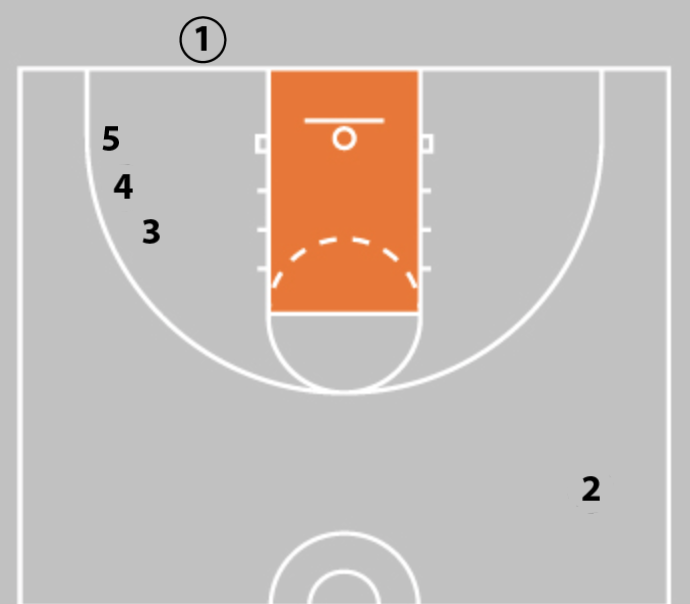
- Whichever side the ball is on, 3 players should line up shoulder to shoulder facing the hoop.
- Player 2 takes up his position way high on the offside.
- The inbounder should focus on the three stacked players as if that's where he intends to throw the ball.
- Even a little surprise acting and exaggeration by the inbounder is surprisingly effective in the heat of the game.
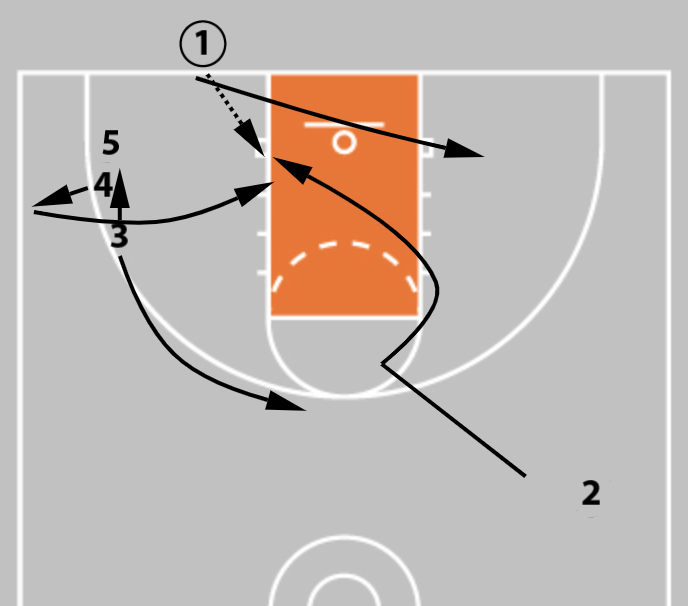
- When the inbounder slaps the ball, Player 4 steps back and Players 3 and 5 close up, forming a screen.
- The inbounder looks at this action.
- Player 2 cuts hard to the hoop and attempts to beat his man to get open for a pass and lay-in.
- Player 3 heads out to the fast-break prevention position.
- Ideally, Player 2 will be free and the inbounder who has been selling the defense by looking at the three-point shooter, will deliver a pass as Player 2 comes clear for a layup.
- Player 2 has a lot of room to make creative cuts and spin moves.
- The key for Player 3 is to not move too early because you want to give Player 2 every opportunity and maximum space to beat his man.
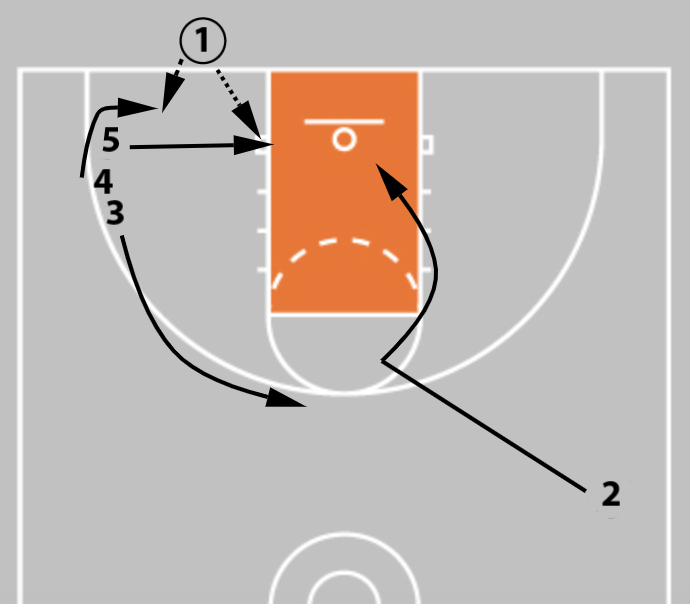
- If the game situation is right, the inbounder can hit Player 4 for the three-pointer.
- After the shot is on the way, Player 3 should move to the fast break prevention position.
- Players 1, 2, and 5 should be ready to rebound.
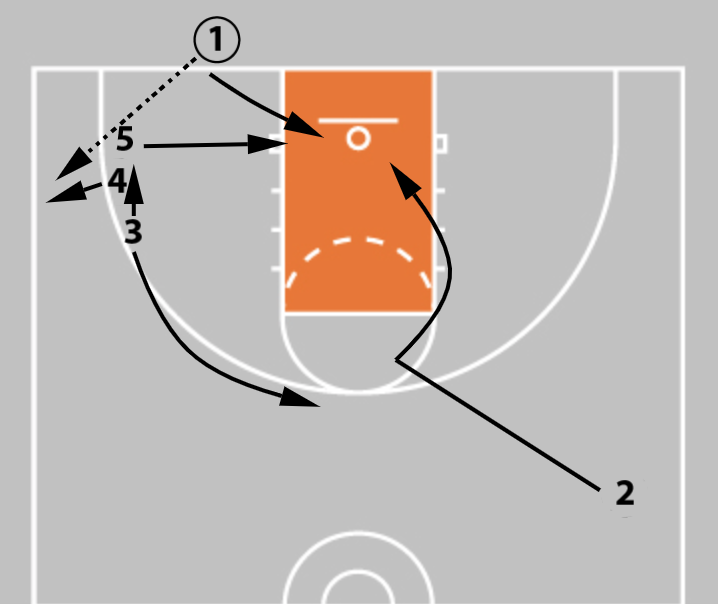
Defenses sometimes get confused by this set.
- Players 4 or 5 are left in a position to make a straight cut to the basket for a direct pass and lay-in.
- Player 3 could also make a straight cut to the basket. If this happens, then Player 4 inherits deep responsibility.
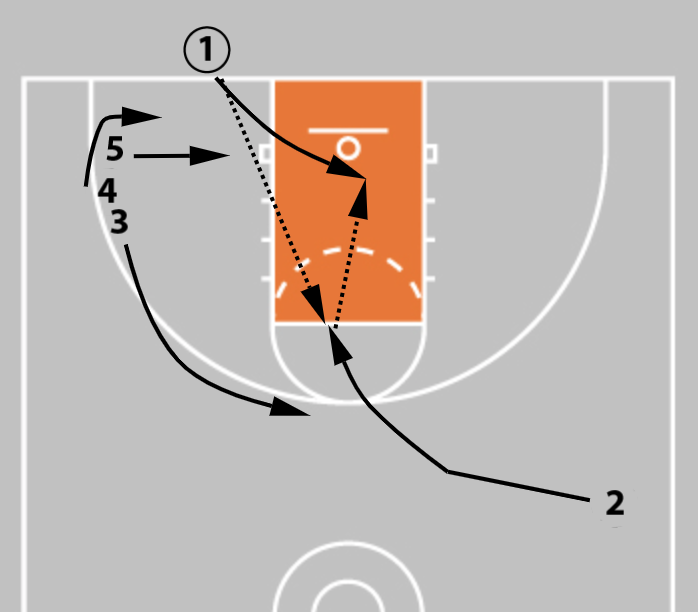
Another variation:
- Player 2 cuts to the basket and receives a pass from Player 1.
- Player 2 passes back to Player 1 who is cutting to the basket.
- Player 2 could also pass to Player 5.
- This variation works especially if you are running this play for the second or third time during the game. The defender is probably giving the cutter a big cushion to prevent lay-ins.
- Very often, the inbounder will be wide open on the return pass.

Another variation:
- Player 2 flare cuts out to the right corner and receives the pass.
- Player 2 reverses the ball to Player 3 at the free-throw line.
- Player 3 dumps the ball down to Player 1 who is cutting to the basket.
- Player 4 cuts low off Player 5 who steps to the mid-clock area.
- The inbounder should sell the overload, keeping the off-side cutter in his peripheral vision only.
- The inbounder needs to be patient and wait for the cutter to lose his man.
- All players need to be alert to defensive lapses. If there is a direct cut to the basket, take it.
- Make sure that there is always a player occupying the fast-break prevent area.
Teaching Tips / Motivation:
- Make sure that the inbounder steps directly into the court before cutting to any other area.
- Tell players that this play provides more opportunities than most for alert players to get easy, unplanned lay-ins.
- Praise players for making good decisions.
To get FREE 33 Winning Basketball Plays, click the banner below
|
||||||||||||||||||||||||




 Facebook (145k Followers)
Facebook (145k Followers) YouTube (152k Subscribers)
YouTube (152k Subscribers) Twitter (33k Followers)
Twitter (33k Followers) Q&A Forum
Q&A Forum Podcasts
Podcasts